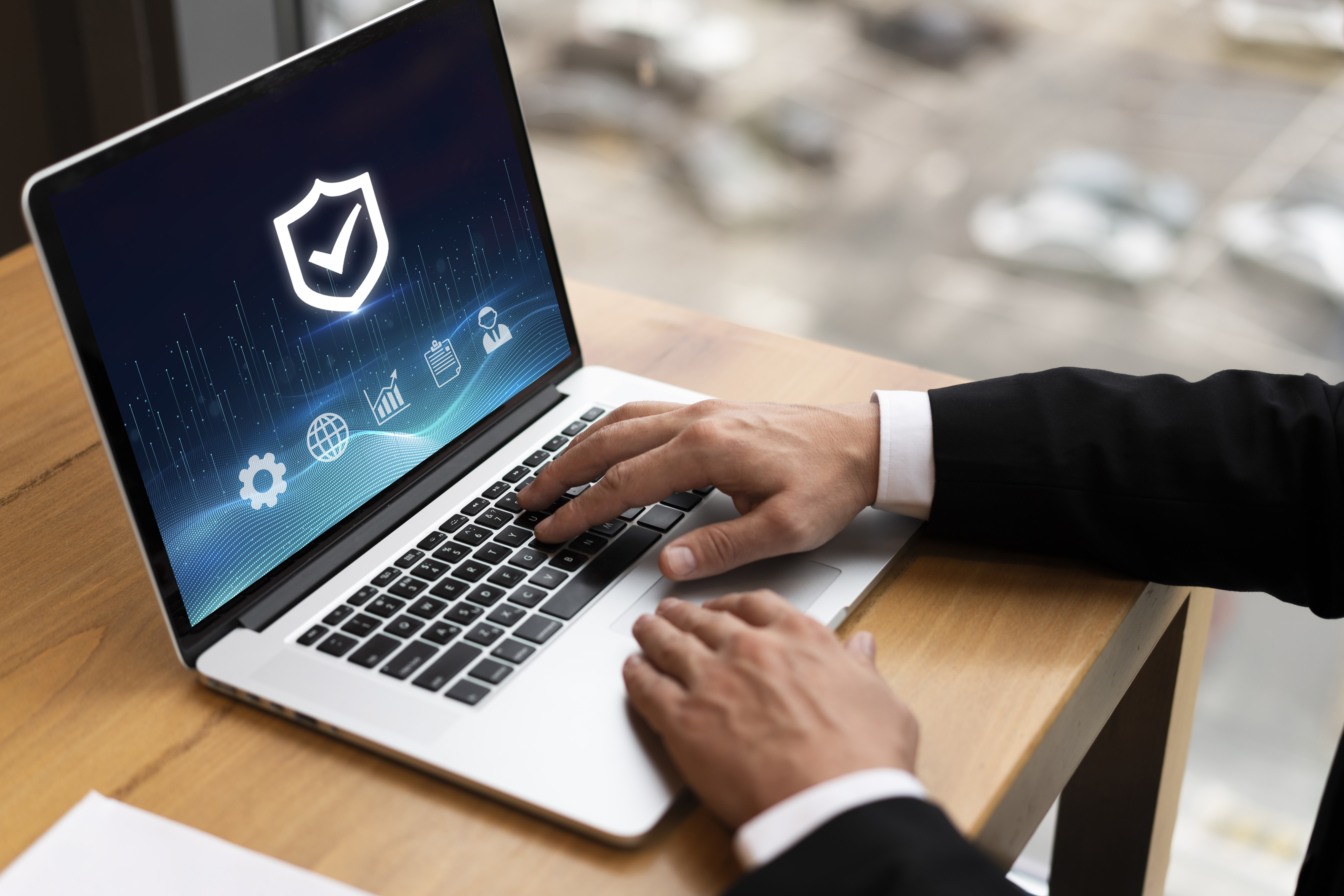7 Effective Steps to Protect Company Data from Phishing and Malware
Read Time 4 mins | 22 Jan 2025 | Written by: Nur Rachmi Latifa

Cyberattacks such as phishing and malware are increasingly common, targeting a wide range of organizations, from small companies to large corporations. According to the annual report on cyber threats, phishing attacks are one of the most common methods used by hackers to steal sensitive information, such as login credentials and financial data. Malware is also a serious threat that can damage company systems, steal data, or even extort money through ransomware. Here are seven effective steps that can be taken to protect company data from phishing and malware attacks.
1. Regular Employee Education and Training
One of the biggest weak points in corporate cybersecurity is people. Many phishing and malware attacks are successful because employees are unaware of the red flags in the emails or links they receive. Therefore, the first step in protecting company data is to ensure that all employees receive ongoing cybersecurity training.
This training should include how to recognize phishing emails, suspicious links and unsafe file attachments. In addition, companies should periodically conduct phishing attack simulations to gauge employee readiness and increase their awareness of possible cyber threats. When employees are properly trained, they can be the first line of defense in detecting and preventing attacks before they harm the company.
Read : Causes of Data Breaches and How to Prevent Them
2. Using Multi-Factor Authentication (MFA) Solution
Phishing attacks are usually designed to steal user login credentials, which are then used by hackers to gain unauthorized access to corporate systems. One of the best ways to mitigate this risk is to implement multi-factor authentication (MFA). MFA adds an additional layer of protection on top of usernames and passwords, usually by requiring users to enter a code sent via SMS or using an authentication app.
With MFA, even if someone's login credentials are stolen, an attacker still needs a second authentication factor to gain access to the account. This MFA solution has proven effective in preventing phishing attacks and reducing the likelihood of unauthorized access to corporate data.
Additionally, companies should consider using an MFA solution that can be integrated with all applications and services used by employees, thus providing end-to-end protection.
3. Regularly Update and Patch Software
Outdated or unpatched software is often a gap exploited by malware to infect systems. Outdated software contains security vulnerabilities that can be exploited by attackers to spread malware or access corporate data.
Therefore, companies should implement a consistent update and patching process for all the software and hardware they use. This includes operating systems, applications, mobile devices, as well as servers and databases. Ensuring that all software is always up-to-date will greatly reduce the risk of exploitation by malware.
This process should be automated as much as possible so that companies can respond quickly to critical security updates without delay.
4. Using an Intrusion Detection and Prevention System (IDS/IPS)
Intrusion Detection and Prevention Systems (IDS/IPS) are one of the effective tools to protect corporate networks from phishing and malware attacks. IDS works by detecting patterns of suspicious or unusual activity within the network, while IPS goes further by preventing such attacks before they cause damage.
IDS/IPS can identify various types of attacks, including malware attacks that attempt to infect systems through phishing emails or attached files. With these solutions in place, companies can detect threats early and block them before they damage data or internal networks.
In addition, IDS/IPS should be integrated with other cybersecurity systems such as firewalls and antivirus to provide more comprehensive protection.
5. Implement a Strict Data Access Policy
Limiting employee access to sensitive data is an important step in protecting company information. A strict data access policy follows the principle of least privilege, where employees are only granted access to data that they absolutely need to perform their duties.
By using an Identity and Access Management (IAM) System, companies can manage user access rights more easily and more securely. IAM allows companies to conduct regular audits of access rights, ensuring that no employee has excessive access to sensitive data.
In addition, access verification is also important. Employees accessing critical data must go through a stricter authentication process, such as using MFA.
6. Implementing Real-Time Security Monitoring
Malware or phishing attacks often have early signs that can be detected if a company has a real-time security monitoring system. By monitoring network traffic and user activity, companies can immediately detect suspicious patterns that may indicate an attack in progress.
Real-time monitoring tools can detect abnormal activity, such as a large number of failed login attempts, suspicious email sends, or unusual file movements. When threats are detected, cybersecurity teams can take immediate mitigation steps to prevent further damage.
In addition, real-time monitoring helps in rapid response to cyber incidents, which is crucial in minimizing the impact of attacks that manage to penetrate initial protection.
7. Regular and Secure Data Backup
The last but not least step is regular data backup. Regular backups ensure that in the event of a malware attack, such as ransomware, the company still has a copy of the data that can be recovered.
However, it is important to ensure that the backup process is done securely. Backup data should be stored in a location that is isolated from the main network to prevent malware infections from spreading. Additionally, backups should be encrypted to protect the data from unauthorized access.
Automating the backup process will also ensure that the company always has an up-to-date copy of the data ready to use in emergency situations.
Read: Dark Web and Data Security Risks: Why Companies Must Stay Vigilant?
Conclusion
Protecting company data from phishing and malware attacks requires a layered and proactive approach. By following the seven steps above-training employees, implementing MFA, updating software, using IDS/IPS, strictly managing data access, monitoring security in real-time, and performing secure backups-a company can significantly reduce the risk of data leakage and system damage.
Cybersecurity is not a one-time task, but an ongoing process that requires constant monitoring and evaluation. By implementing the right strategies, companies can protect their data from evolving cyber threats and maintain sustainable business operations in the long run.


